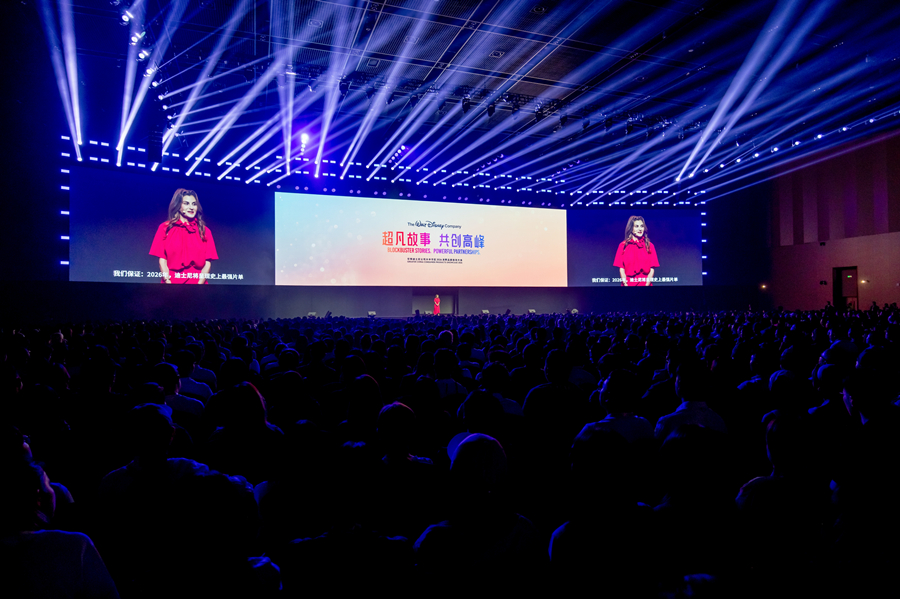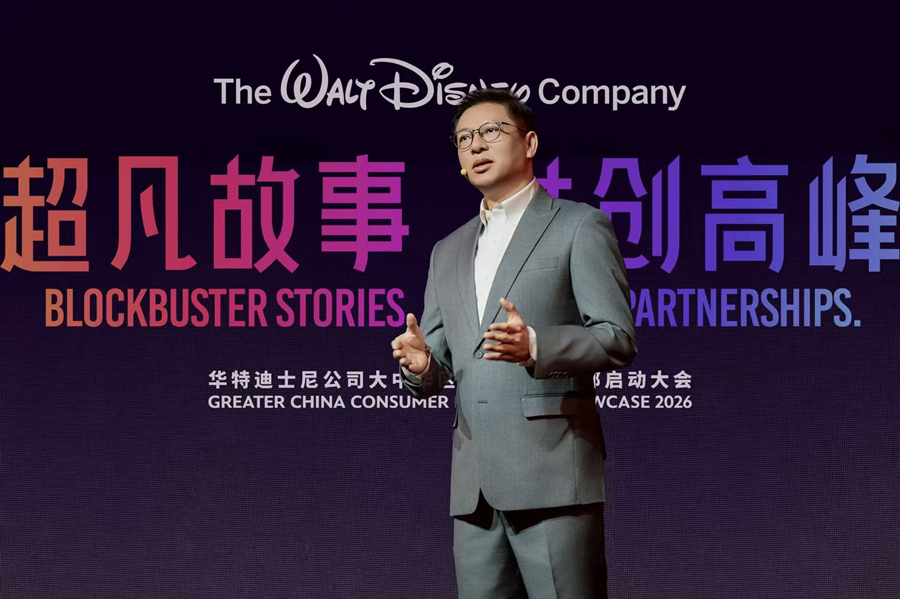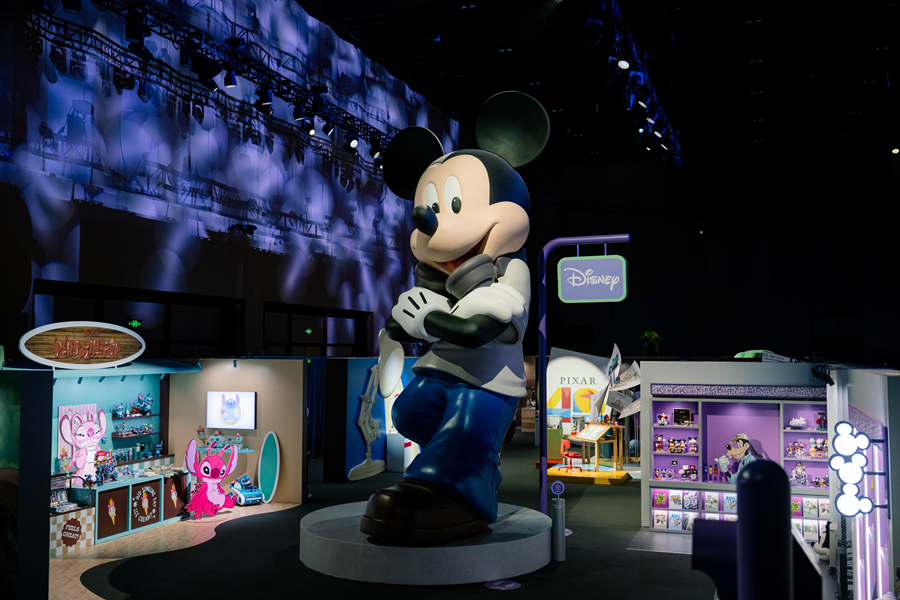The Walt Disney Company continues to outperform competitors in the global licensing industry, with $62 billion in annual retail sales of licensed products. Yet, even as the world's leading licensing company, Disney continues pursuing new audiences as a central business priority.

A wide-screen installation shows Mickey Mouse and Friends clips during Disney's Greater China Consumer Products Showcase in Shanghai, Sept. 10, 2025. [Photo courtesy of The Walt Disney Company]
"One of the biggest challenges for us is that you have to stay hungry," said Tasia Filippatos, president of Disney Consumer Products, at the company's Greater China showcase on Sept. 10. "You have to stay very fast, innovative, and continually go out and change and evolve with the consumer and not get comfortable with the size of our business."
To achieve this, Disney focuses on two key areas: adapting to changing consumer preferences among existing fans and attracting new generations of consumers.
High-profile collaborations illustrate Disney's strategy to reach new audiences. The recently announced two-year partnership between Mickey and Friends and Formula 1 aims to tap new fan bases, while Disney continues forming partnerships and creating events with luxury fashion brands, including Balmain and Coperni.
"We are one of the only brands that play at every level of the retail pyramid," Filippatos noted. "We go into places where we currently maybe don't have a presence, don't have as many fans and say, 'We have something to offer you, too.'"

Tasia Filippatos, president of Disney Consumer Products, speaks during Disney's Greater China showcase in Shanghai, Sept. 10, 2025. [Photo courtesy of The Walt Disney Company]
The partnership with F1 taps into the sport's massive global audience. China represents one of F1's fastest-growing markets, offering Disney access to demographics it might not otherwise reach.
The F1 activation will feature Mickey and Friends as racing fans, with the characters appearing in merchandise, content and Disney experiences at events like the Shanghai Grand Prix.
Disney also focuses on reaching Generation Alpha and Gen Z consumers through platform migration and emotional connections, Filippatos said.
The company targets younger consumers on social media and gaming platforms where they spend time. "We're making sure that we are where the consumer already is," she said. This strategy includes partnerships with platforms like Webtoon and expanding Disney's gaming portfolio with titles like "Marvel Rivals."
Beyond platform presence, Disney targets emotional trends important to younger demographics, including collectible cards, pet-related products and comfort purchases. "Nostalgia would be another consumer trend," Filippatos said, pointing to Stitch's renewed popularity among Gen Z consumers. "The world can sometimes feel like a challenging place. When you can go back to childhood memories, that brings peace and comfort and fun to today's young adults."

Kermid Rahman, senior vice president for Disney Consumer Products in Asia Pacific, speaks during Disney's Greater China showcase in Shanghai, Sept. 10, 2025. [Photo courtesy of The Walt Disney Company]
China plays an important role in Disney's strategy for the Asia Pacific region, according to Kermid Rahman, senior vice president for Disney Consumer Products in Asia Pacific.
"The Chinese market is very important for the global market," Rahman said. "Consumer preferences are always evolving, and these cycles are becoming shorter."
Disney works with Chinese licensees to develop products for global markets, with many of its partners expanding from initial Southeast Asian sales into Europe and North America.
Cross-border business growth for Disney's Asia Pacific partners surged about 45% in 2025 compared with the previous year. The company's cross-border initiative, launched two years ago, now includes more than 70 partners.
"When expanding beyond China, determining retail channels and pricing is challenging for any brand," Rahman said. "This is where Disney's advantage lies. Our local teams worldwide work directly with Chinese licensees. Most IP companies couldn't achieve this, but we're leading in this aspect."
Filippatos praised Chinese partners like Miniso and Pop Mart for their innovation and understanding of Disney's brand. "They understand the DNA of Disney, and they have real love for our characters, products and stories," she said.
China also serves as a global trendsetter, Filippatos said. "Many of the trends that are global trends start in China," she noted, citing livestream commerce, social selling and product-gaming integration. "We see it as a testing ground for new ideas, and we watch it very closely."

A 7-meter-tall Mickey Mouse installation at Disney's Greater China Consumer Products Showcase in Shanghai, Sept. 10, 2025. [Photo courtesy of The Walt Disney Company]
Rahman said Disney's competitive advantage extends beyond IP licensing. "Many people think Disney is all about IP — but we're not just in the IP business. Disney also plays a consulting role," he explained. Disney provides one-stop advisory solutions for its licensing partners across product development, marketing strategy and retail distribution.
Disney's integrated approach across movies, theme parks, consumer products and games creates advantages competitors cannot match, according to Filippatos.
"The differentiator is these stories that have a lot of heart and deep connection," Filippatos said. "You take those stories and continue to tell that story with all of these different touchpoints."


 Share:
Share: 




 京公网安备 11010802027341号
京公网安备 11010802027341号